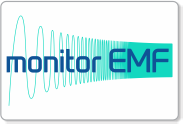 Print
Print
Spectrum Monitoring
The monitoring of the radio frequency spectrum for non-governmental use pursues the following objectives:
- Settle the cases of harmful interference in the electromagnetic spectrum, which affect the operation of various services, systems or applications;
- Identify, track and take steps for removing unauthorised emissions in order to avoid harmful interference;
- Support the process of efficient spectrum management;
- Support surveillance and enforcement activities by monitoring the technical emission parameters, with a view to identifying breaches of the values in the authorization documents;
- Assess the degree of coverage with mobile electronic communications services in cities and municipalities, along national and county roads, and in border areas;
- Identify and notify breaches of the international and/or bilateral spectrum agreements by monitoring the technical emission parameters/the emissions received in border areas, coming from foreign countries.
ANCOM uses the data collected in the spectrum monitoring activity in order to:
- Identify and track unauthorized emissions;
- Verify compliance with the technical parameters specified in the authorisation documents;
- Assess the actual occupancy of the unassigned frequency channels and of the assigned frequency channels, compared to the spectrum occupancy registered with the Authority’s spectrum management units.
The data collected result from certain parameter measurements: the central frequency, the occupied frequency bandwidth, the modulation parameters (frequency deviation/degree of modulation), field strength, direction of arrival, time intervals in which the signals were on air.
The results of analysing the data gathered during the monitoring activity are used in:
- recommendations for licence holders or for ANCOM’s spectrum management units with a view to removing/avoiding interferences;
- identification and tracking of unwanted or unauthorised emissions, and the provision of such information to the ANCOM enforcement units with a view to starting the legal procedures;
- identification of the transmitters which do not observe the emission parameters specified in the authorization documents;
- identification of the frequencies or frequency bands with a high risk of congestion or which are already congested,
- identification of harmful interferences or international coordination issues, and elaboration of recommendations to the spectrum management units;
- identification of the frequencies or the frequency bands that are underutilized, with a view to their reuse or refarming (as appropriate);
- identification of the frequencies or frequency bands available on a national, regional or local level;
- tracking of the SOS frequencies or of the emissions in the emergency bands (if necessary).
Furthermore, ANCOM performs on-site measurements with a view to settling complaints and carries out monitoring campaigns for various purposes, e.g. assessing coverage with mobile electronic communications services – the results of this campaign are available on www.aisemnal.ro.
Since the frequency spectrum is used 24/24, the frequency spectrum monitoring is an ongoing activity. Thus, in view of maintaining the frequency spectrum as interference-free as possible, ANCOM acts both pro-actively (by continuously monitoring the frequency spectrum and removing the causes of interferences before they produce effects), and reactively (by answering any request for interference settlement in the shortest time possible).


